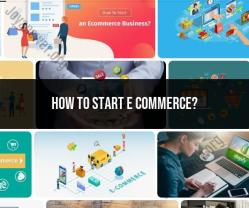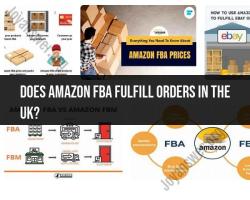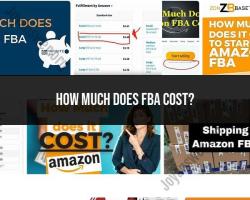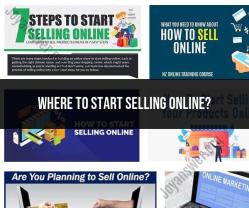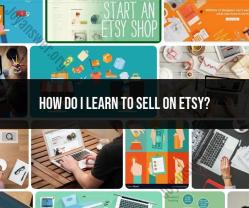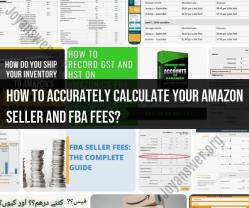Where to start selling online?
Starting to sell online can be an effective way to reach a broader customer base and expand your business. Here are the key steps to get started with online selling:
Choose Your Online Selling Platform:
- Determine where you want to sell your products or services. Some popular online platforms include:
- E-commerce Website: Create your own website or hire a web developer to build an online store tailored to your brand.
- Marketplace Websites: Consider selling on established platforms like Amazon, eBay, Etsy, or Shopify.
- Social Media: Utilize social media platforms like Facebook, Instagram, or Pinterest to showcase and sell products directly to your followers.
- Online Marketplaces: Explore specialized marketplaces such as Houzz (for home decor) or TpT (for educational resources).
- Subscription Box Services: If applicable, explore subscription box services like Cratejoy.
- Determine where you want to sell your products or services. Some popular online platforms include:
Register Your Business:
- Ensure that your business is legally registered and complies with local and national regulations. This may include obtaining a business license, registering for taxes, and adhering to specific industry regulations.
Source Products or Services:
- Determine what you will sell online. Whether it's physical products, digital goods, services, or a combination, ensure you have a reliable source or method to fulfill orders.
Set Up an Online Store:
- If you choose to create your own website, set up an e-commerce platform. You can use website builders like Shopify, WooCommerce (for WordPress), Wix, or Squarespace to simplify the process.
Product Listings and Descriptions:
- Create detailed and attractive product listings. Include high-quality images, compelling descriptions, pricing, and shipping information.
Pricing and Payment Processing:
- Determine your pricing strategy, including product pricing, shipping costs, and any applicable taxes. Set up secure payment processing options for your customers.
Shipping and Fulfillment:
- Decide how you will handle shipping and fulfillment. Options include self-fulfillment, third-party fulfillment centers, dropshipping, or digital product delivery.
Website Design and Branding:
- Ensure your online store is visually appealing and reflects your brand identity. Use professional design, branding elements, and a user-friendly layout.
Market Your Online Store:
- Develop a digital marketing strategy to promote your online business. This may involve search engine optimization (SEO), social media marketing, email marketing, pay-per-click advertising, and content marketing.
Customer Support:
- Offer excellent customer support to address inquiries, resolve issues, and provide assistance to your customers.
Security and Privacy:
- Implement robust security measures to protect customer data and ensure online transactions are secure.
Track Performance:
- Use analytics tools to monitor the performance of your online store. Track sales, website traffic, conversion rates, and customer behavior to make informed decisions.
Adapt and Expand:
- Continuously adapt to market trends, gather customer feedback, and consider expanding your product offerings or entering new markets.
Legal Considerations:
- Be aware of e-commerce laws and regulations, including consumer protection laws, privacy policies, and terms of service agreements.
Customer Feedback and Reviews:
- Encourage customer reviews and feedback to build trust and credibility.
Remember that success in online selling often takes time and effort. Building a strong online presence, attracting customers, and maintaining customer satisfaction are ongoing processes. Continuously assess and refine your online business strategies to achieve your sales and growth objectives.


